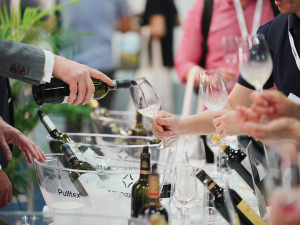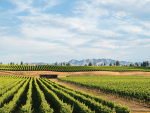How strong is New Zealand wine in these markets?
New Zealand wine is very well regarded in these markets, especially the Sauvignon Blanc that put New Zealand on the map. We have seen promising gains, but there is still significant opportunity to increase our market share, which is our focus for 2024 and beyond.
Korea’s wine market has seen impressive growth during and post-Covid-19. New Zealand is the seventh largest wine exporter to South Korea, with imports worth almost NZ$25million in 2022. Our wine exports to Korea grew at the highest rate of any international market, and account for nearly 3% of South Korea’s total wine imports. We see more potential to ride this wave.
Our wine exports to Singapore make up only 1.4% of Singapore’s total wine imports, but with an almost 23% increase in total import value of New Zealand wines (NZ$22.7 million) from the year before, New Zealand currently sits as the sixth largest wine exporter to Singapore.
Finally, Japan has the largest wine market in this region. Although New Zealand is the tenth-largest international supplier by value and volume, it is still less than 1% of Japanese wine imports. But in 2022 we were the top country in terms of overall growth percentage, highlighting the opportunity to increase New Zealand wine consumption in Japan.
Overall, our consumer perception research shows that New Zealand wine is highly regarded in Asia amongst those aware of our brands, but there is room to improve recognition and to lift our positioning on some of the higher-impact drivers around taste and quality.
Where do people buy and drink our wine?
In Japan, retail channels are becoming increasingly important as consumers shift towards at-home wine consumption. New Zealand wines currently enjoy a pricing sweet spot of NZ$13.1 per litre, between the higher prices of United States wines at US$17.9 per litre, and most other countries, including Australia at NZ$5.1 per litre. In Singapore, New Zealand is positioned at the top of mid-range; quite different to Australia, which is a volume driver with almost 70% of wines costing less than NZ$50. In Korea, hypermarkets have played a major role in making wine a mass market item, offering wines for as low as NZ$5 with heavy promotions. The average spend on a bottle off-trade varies between NZ$38 for home consumption to NZ$72 for a gift; or up to an average of $87 on-trade at a formal meal.
Market numbers and growth
Between the three markets, we’ve seen a rise of more than 50% in export values over the past two years, led by growth in Korea. Korea saw a huge spike in wine consumption during the Covid social distancing measures, which sparked a trend known as ‘homsul’, drinking alcohol at home by oneself. New Zealand wine exports to Korea jumped 125% between 2020-2022, and the challenge for us is to maintain that momentum and take advantage of changes as result of new preferences.
During that same period our wine exports to Singapore increased 49%. Singapore is a small but premium market for wine and is significant as a regional export hub. New Zealand mainly exports still wine to Singapore, of which approximately 75% is white. Sparkling wine recorded tremendous growth between mid-2022 and mid-2023 to account for 10% of total wine exports to Singapore, and we expect that trend to continue. Our wine exports to Japan had been consistent until a spike in 2022 with 25% growth. Red wine accounts for 70% of international still wine sales in Japan, but there is growing interest in white wines, and our Sauvignon Blanc is well suited to the Japanese palate.
How can we grow market share?
Sauvignon Blanc has solidified New Zealand’s wine brand in East Asian markets, but it has also presented opportunities for other grape varietals to be introduced. In a recent wine media masterclass in Japan, varietals such as New Zealand Chardonnay and Pinot Noir were introduced. Consumers are also showing interest in learning how to consume wine and be educated on how to pair that with food.
What's driving purchase behaviour for wine?
Each of the markets has different trends and drivers, and exporters are adapting to these in their own way. Japan’s key wine consumers are older, male and wealthy, but the landscape is shifting. New Zealand wines appeal to traditional wine drinkers, but we encourage exporters to build relationships with younger consumers who are open to experimentation and unique products. Wine is mainly sold through retail channels rather than in restaurants and bars. Within retail, 50% of wine is sold in supermarkets, followed by 27% in specialist stores.
Wine is still a relatively new category in Korea and is price-driven. Koreans drink wine for relaxation, with a shift away from consumption during formal occasions. Koreans also have a strong tradition of gifting wine, and we have helped customers identify seasonal opportunities for wine sales and to consider how packaging can help. Hypermarkets and supermarkets sell the highest volume of wine, offering a variety of value and premium wines at affordable prices. Department stores and specialist wine retailers sell premium wine brands to more experienced wine drinkers, as consumers drink more alcohol at home.
Singapore is a mature market, with a small but passionate base of wine enthusiasts who are familiar with premium wines. There is an appetite to learn about wines through in-person courses, tastings, and online sources. Retailers and importers are active in running tasting sessions to stimulate premium purchases. In Singapore, just under three-quarters of alcohol is bought in stores while the remainder is bought online.
How can New Zealand companies tap into that?
To reach younger wine drinking audiences, New Zealand Trade and Enterprise (NZTE) hosts a range of online and in-person events across all three markets. We also leverage the global premium food and beverage marketing campaign, Made With Care, to use unique aspects of New Zealand’s entire food and beverage sector to lift the profile and value of New Zealand premium wine exports. We often do so in conjunction with New Zealand companies and we encourage them to continue engaging with us to leverage their opportunities in-market. NZTE events include retail and distribution networking programmes, marketing campaigns and capability building workshops with advice from market experts.
At the same time, New Zealand companies should build in regular market visits with their local distributors to understand the landscape and invest in tasting events that build more awareness of their brands with key opinion influencers and media both on and off trade.
What is the East Asia Wine Uncorked Programme?
NZTE is hosting an East Asia Wine Programme to help New Zealand wine exporters understand these wine markets better and identify their brand’s place with a view to expand awareness or lift brand perception. This programme is a week-long in-person market visit to Japan, and Singapore and is set to happen in Q2 of 2024.
For more information, please contact Kylie Archer at This email address is being protected from spambots. You need JavaScript enabled to view it.. Learn more about these markets at my.nzte.govt.nz/resource-library
Kono's Asia Success Story
Despite Japan being the largest wine-consuming country in Asia, success in this market depends on having a good marketing strategy that demonstrates an understanding of Japanese consumers. Kono Wines’ work in Japan is an excellent example of successful market entry, supported by an effective marketing strategy. During their market entry, Kono was tenacious in their work with Japanese businesses, and as a result has experienced a lot of success.
Entering the Japanese market can pose unique challenges due to the distinct business culture, characterised by slow decision-making and a high-context communication style. Kono consistently engaged with the market, visiting Japan regularly to meet with potential importers. Their tenacity, negotiation skills, and cultural understanding earned great respect and appreciation from their business partners in Japan.
Kono’s market approach included compelling storytelling, supported by Māori strategy. With guidance from their capable Japanese partner, Kono was introduced to Japanese consumers using the tag line ‘kaitiakitanga’, an integral Māori philosophy that acknowledges the significance of land (whenua) and the duty Kono have as guardians of this land to care for the environment and all the people connected with it. Kono integrated the principles of kaitiakitanga into their marketing story, which resonated with young Japanese wine enthusiasts who prioritise sustainability over traditional aspects. Over the past few years, Kono has grown as one of the preferred wines among the Japanese wine enthusiasts.
This case study was supplied by NZTE.













